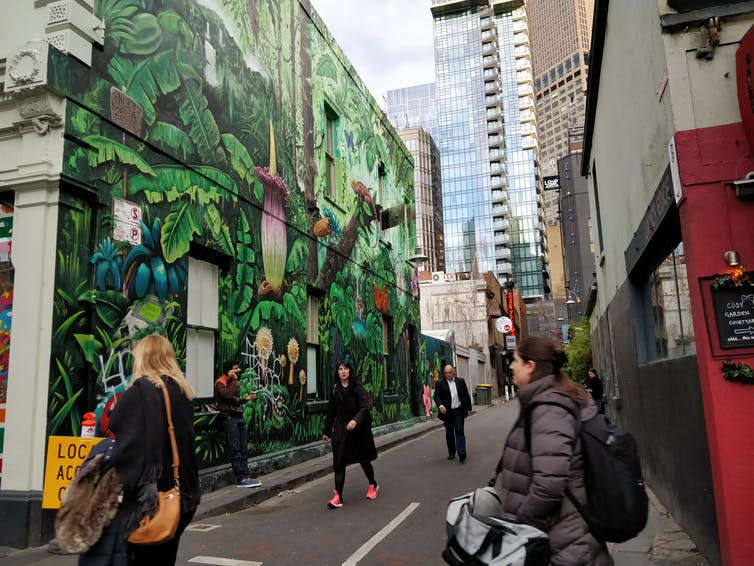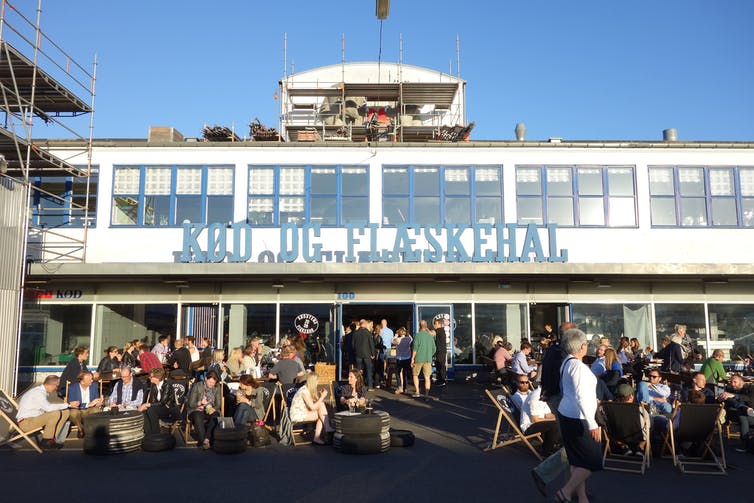From June 1 in Victoria, for example, the limit will be 20 patrons, with 1.5 metres between tables or four square metres per patron. If that goes well, it’ll be 50 patrons from June 22 – if they can be seated the required distance apart. Many smaller businesses won’t be able to do that.
With the Jobkeeper package due to expire in September, the next couple of months is a critical window for traders to find new ways to seat patrons. Fortunately, street space can help a lot with this.
Here are four proven ways to quickly reconfigure street space. We might even find them nice enough to keep.
Footpath trade
Footpath dining already gives many iconic streets their character. Even two or three tables outside a small bar in the evenings can give life to a street.
Putting out tables sounds simple, but the permit process is the real hurdle. It can take weeks or months of waiting and uncertainty while a small team assesses a long list of details.
Councils could employ more assessors to fast-track the process, but there is another option. In the post-COVID environment, it may be time to trust traders and embrace more of the informality we see in cities with great street food. Councils could trial a system where dining is permitted by default in front of each establishment, subject to a few simple rules.
Traders must understand that their permits depend on not blocking thoroughfare. Disability access in particular must be maintained.
However, many footpaths are wide and quiet enough that dining tables could be up and working well in a matter of days.
Parklets
One roadside parking space in front of a café or bar might mean one or two customers – assuming they come to that business. A car park can instead become a “parklet” with space for six to eight people, while looking a lot more inviting. Put two or three parking spaces together and you’ve got a miniature dining area or a parklet.
The parklet idea came out of San Francisco. Examples from there show how diverse and successful these can be. From weirdly sculptural to classically European to high-end and polished, they all add character to the places where they spring up.



-day.jpg)









